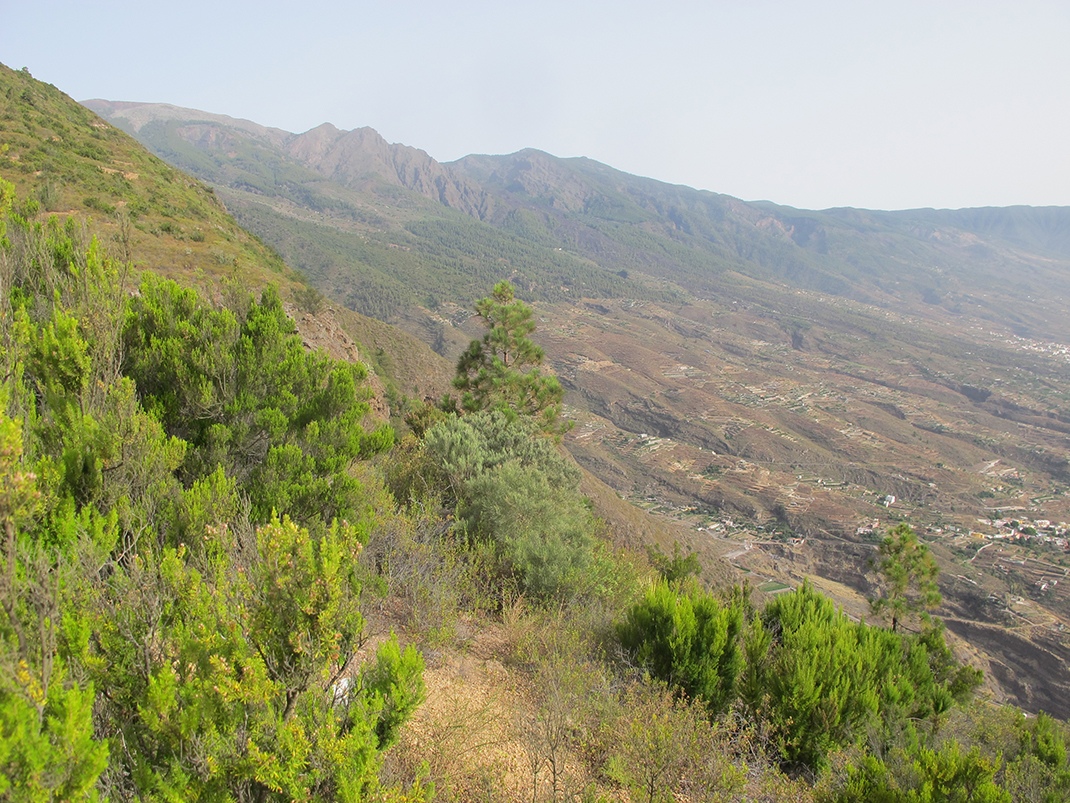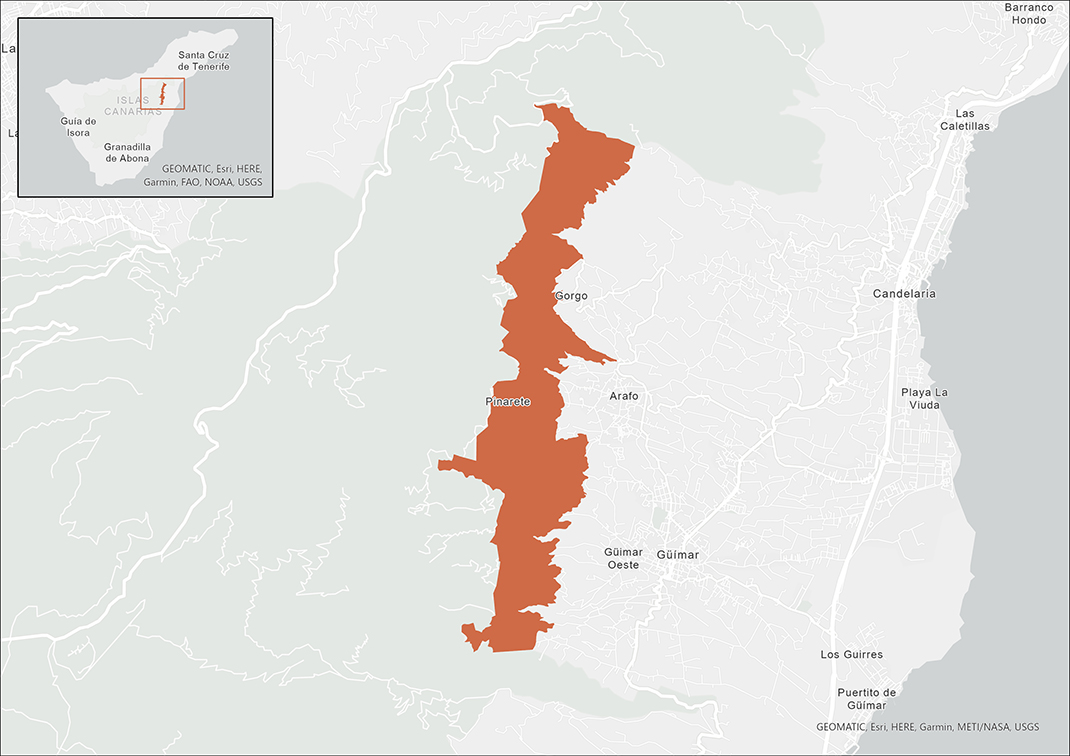Plan your next adventure
Tailor your own route along Tenerife’s trails quickly and easily..
Go to planner
The Siete Lomas Protected Landscape occupies a narrow strip measuring 1km wide, located between 480 and 1400m in altitude, at the top of the Guimar valley and the bottom section of the Pedro Gil ridge.
Recommended time to visit: All year-round.
This is one of the three ridges that over millions of years of eruptions, joined together the three original land masses: Anaga, Teno and Adeje.
It is a rugged area, crossed by numerous ravines and gullies, interspersed by the lomos, or ridges that give this protected landscape its name. It contains a section of the lava flows deriving from the eruption of the Arafo volcano in 1705.
It is a picturesque rural landscape, with particular agricultural influence. There are numerous terraced strips of farmland, many of which have nowadays been abandoned.

Most of the protected landscape is made up of Phoenician juniper (Juniperus phoenicea), madroño (Arbutus unedo), and pine forest, along with a variety of shrubs that have colonised areas damaged by human activity.
You can observe the traditional agricultural use of this land in the large areas used for growing crops.
Nevertheless, there remain many areas of great interest in terms of flora, in steep, isolated zones, including the following ravines: Barranco de Badajoz, del Agua, de Chiñico, Piedra Cumplida, Corral de las Ovejas, Añavingo-Amance and las Gambuesas.
On these slopes you can find the majority of endemic species in the area, some registered as endangered, such as the trébol de risco rosado (Dorycnium spectabile), tabaiba de monte (Euphorbia mellifera), and the jarilla de agache (Helianthemum teneriffae).
Vertebrate fauna is made up of reptiles, mostly the Gallot’s lizard (Gallotia galloti) as well as some geckos and skinks.
In terms of birds, small singing species are the most common, including Eurasian blackcaps, canaries, chiffchaffs and Eurasian blue tits, among others. Birds of prey can also be seen prowling here, such as the kestrel, buzzard, Eurasian sparrowhawk and the long-eared owl.
Bats are the only native mammals present in Siete Lomas. Four out of the six bats found on the island inhabit this area or its proximities, thus it is very likely that they enter into the protected landscape: the Madeira pipistrelle, endemic to the Canary Islands and Madeira; the Canary long-eared bat, endemic to the archipelago; the lesser noctule and the European free-tailed bat.

1013.9 hectares (0.5% of the island)
Trébol de risco rosado (Dorycnium spectabile), tabaiba de monte (Euphorbia mellifera), jarilla de agache (Helianthemum teneriffae), Gallot’s lizard (Gallotia galloti), gecko, Canarian skink, chiffchaff, Eurasian blue tit, kestrel, buzzard, Eurasian sparrowhawk, long-eared owl, Madeira pipistrelle, Canary long-eared bat, lesser noctule bat, European free-tailed bat.
Phoenician juniper, pine forest, ravines, agricultural.
Barranco de Badajoz, Barranco del Agua, Barranco de Chiñico, Piedra Cumplida, Corral de las Ovejas, Añavingo-Amance, Las Gambuesas.
To consult permits for use and updated regulations for this Protected Natural Area, visit the official website of the Government of the Canary Islands.

Tailor your own route along Tenerife’s trails quickly and easily..
Go to planner